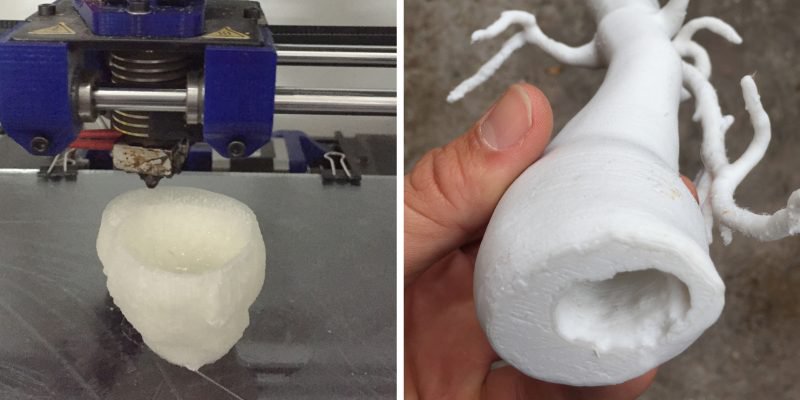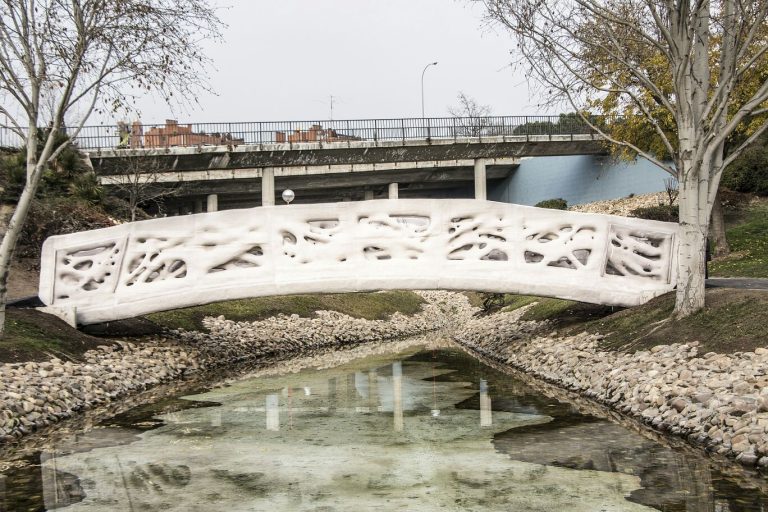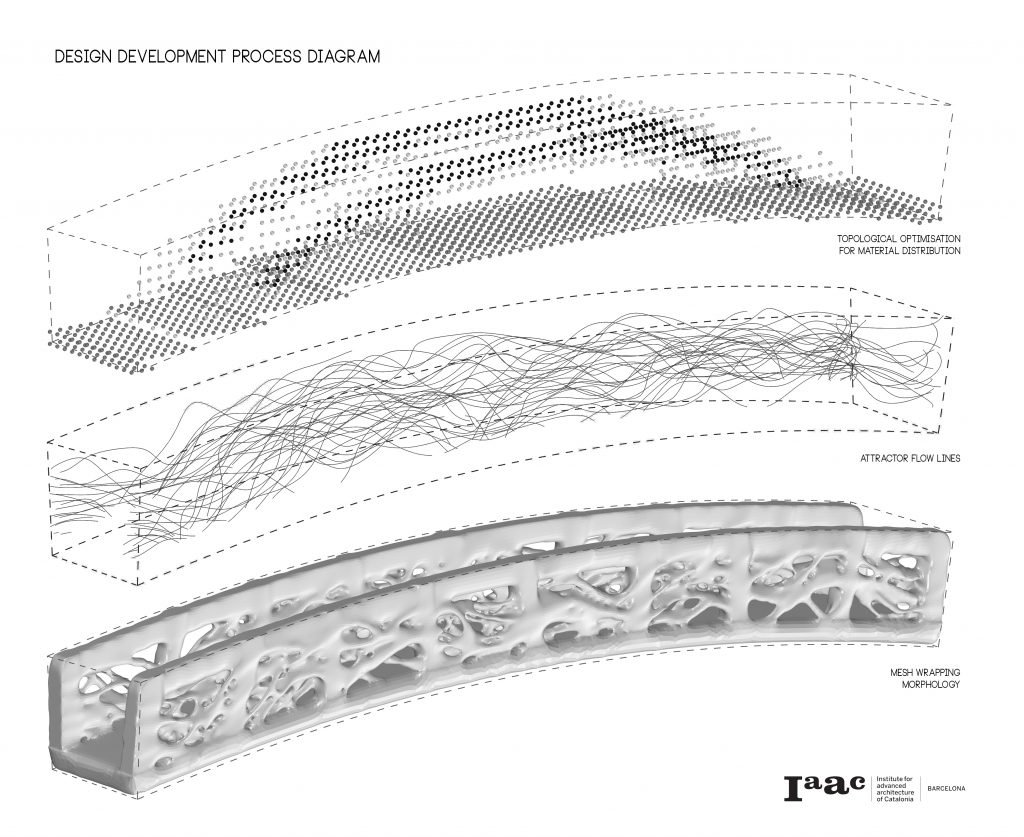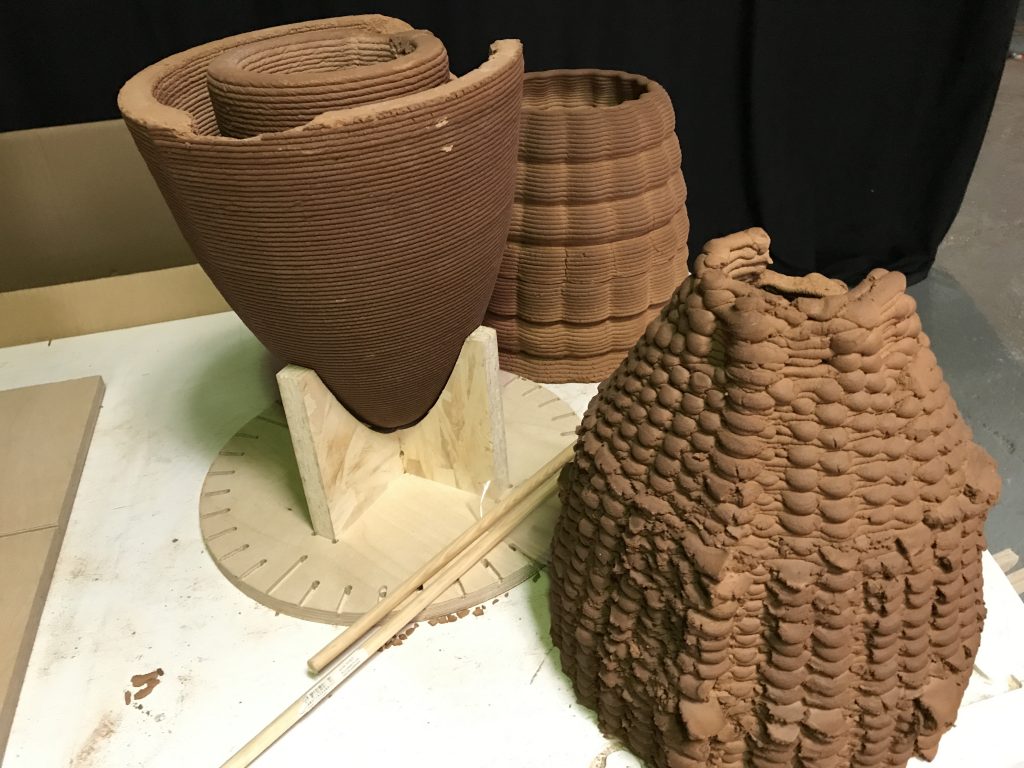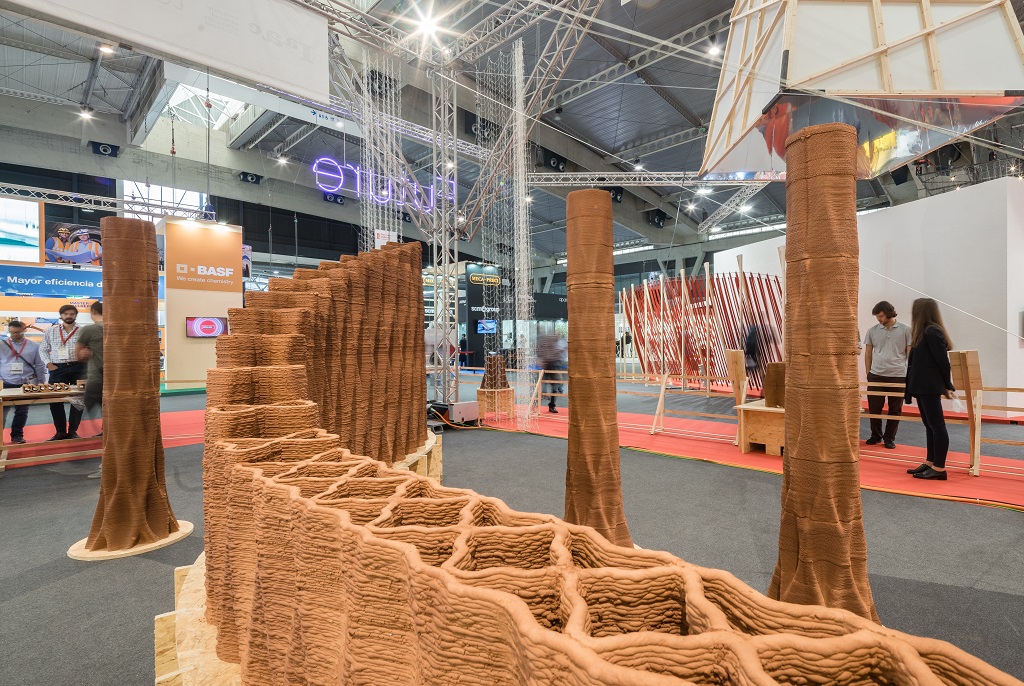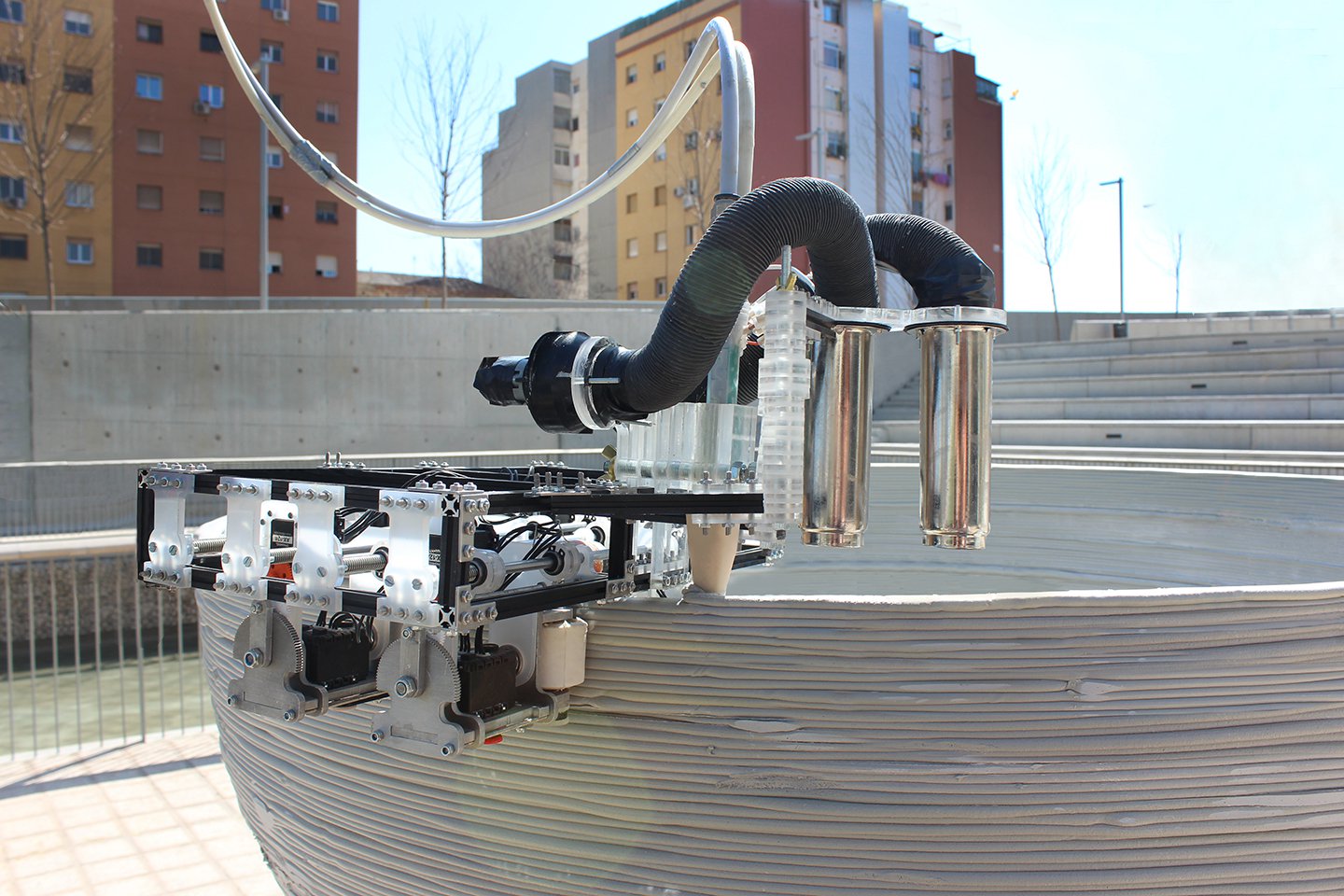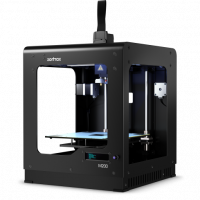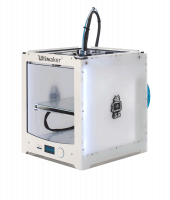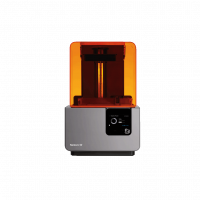Difference between revisions of "3D Print"
(Created page with "3D PRINTING 3D printing, also known as additive manufacturing (AM), refers to processes used to create a three-dimensional object[1] in which layers of material are formed un...") |
|||
| Line 226: | Line 226: | ||
Michael Spence wrote that "Now comes a … powerful, wave of digital technology that is replacing labor in increasingly complex tasks. This process of labor substitution and disintermediation has been underway for some time in service sectors—think of ATMs, online banking, enterprise resource planning, customer relationship management, mobile payment systems, and much more. This revolution is spreading to the production of goods, where robots and 3D printing are displacing labor." In his view, the vast majority of the cost of digital technologies comes at the start, in the design of hardware (e.g. 3D printers) and, more important, in creating the software that enables machines to carry out various tasks. | Michael Spence wrote that "Now comes a … powerful, wave of digital technology that is replacing labor in increasingly complex tasks. This process of labor substitution and disintermediation has been underway for some time in service sectors—think of ATMs, online banking, enterprise resource planning, customer relationship management, mobile payment systems, and much more. This revolution is spreading to the production of goods, where robots and 3D printing are displacing labor." In his view, the vast majority of the cost of digital technologies comes at the start, in the design of hardware (e.g. 3D printers) and, more important, in creating the software that enables machines to carry out various tasks. | ||
| + | |||
| + | = Related Machines at IAAC = | ||
| + | |||
| + | <gallery widths=350 heights=200 style="text-align:center"> | ||
| + | File:Zortrax m200.png |Zortrax m200/m200 Plus 3D printer|link=Zortrax M200 3D printer | ||
| + | File:Ultimaker2.png|Ultimaker 2 3D printer|link=Ultimaker 2 3D printer | ||
| + | File:Maquinas-366.png| RepRapBCN |link=RepRapBCN | ||
| + | File:Form-2.png|3D printer Formlabs Form 2|link=Formlabs Form 2 3D printer | ||
| + | </gallery> | ||
| + | |||
[[Category:Technologies]] | [[Category:Technologies]] | ||
Latest revision as of 17:54, 3 November 2020
3D PRINTING
3D printing, also known as additive manufacturing (AM), refers to processes used to create a three-dimensional object[1] in which layers of material are formed under computer control to create an object.[2] Objects can be of almost any shape or geometry and typically are produced using digital model data from a 3D model or another electronic data source such as an Additive Manufacturing File (AMF) file. Stereolithography (STL) is one of the most common file types that 3D printers can read. Thus, unlike material removed from a stock in the conventional machining process, 3D printing or AM builds a three-dimensional object from computer-aided design (CAD) model or AMF file by successively adding material layer by layer.
The term "3D printing" originally referred to a process that deposits a binder material onto a powder bed with inkjet printer heads layer by layer. More recently, the term is being used in popular vernacular to encompass a wider variety of additive manufacturing techniques. United States and global technical standards use the official term additive manufacturing for this broader sense.
Contents
- 1 Terminology
- 2 History
- 3 General principles
- 4 Processes and printers
- 5 Iaac 3D Printed Bridge Alcobendas
- 6 Iaac 3D Print Clay
- 7 Iaac 3D Print Minibuilders
- 8 Legal aspects
- 9 Gun legislation and administration
- 10 Health and safety
- 11 Health regulation
- 12 Impact
- 13 Social change
- 14 Related Machines at IAAC
Terminology
The umbrella term additive manufacturing (AM) gained wide currency in the 2000s The term subtractive manufacturing appeared as a retronym for the large family of machining processes with metal removal as their common theme. The term 3D printing still referred only to the polymer technologies in most minds, and the term AM was likelier to be used in metalworking and end use part production contexts than among polymer, inkjet, or stereolithography enthusiasts.
By the early 2010s, the terms 3D printing and additive manufacturing evolved senses in which they were alternate umbrella terms for AM technologies, one being used in popular vernacular by consumer-maker communities and the media, and the other used more formally by industrial AM end-use part producers, AM machine manufacturers, and global technical standards organizations. Until recently, the term 3D printing has been associated with machines low-end in price or in capability.[5] Both terms reflect that the technologies share the theme of sequential-layer material addition or joining throughout a 3D work envelope under automated control. Peter Zelinski, the editor-in-chief of Additive Manufacturing magazine, pointed out in 2017 that the terms are still often synonymous in casual usage but that some manufacturing industry experts are increasingly making a sense distinction whereby AM comprises 3D printing plus other technologies or other aspects of a manufacturing process.
Other terms that have been used as AM synonyms or hypernyms have included desktop manufacturing, rapid manufacturing (as the logical production-level successor to rapid prototyping), and on-demand manufacturing (which echoes on-demand printing in the 2D sense of printing). That such application of the adjectives rapid and on-demand to the noun manufacturing was novel in the 2000s reveals the prevailing mental model of the long industrial era in which almost all production manufacturing involved long lead times for laborious tooling development. Today, the term subtractive has not replaced the term machining, instead complementing it when a term that covers any removal method is needed. Agile tooling is the use of modular means to design tooling that is produced by additive manufacturing or 3D printing methods, to enable quick prototyping and responses to tooling and fixture needs. Agile tooling uses a cost effective and high quality method to quickly respond to customer and market needs, and it can be used in hydro-forming, stamping, injection molding and other manufacturing processes.
History
Early additive manufacturing equipment and materials were developed in the 1980s.[7] In 1981, Hideo Kodama of Nagoya Municipal Industrial Research Institute invented two additive methods for fabricating three-dimensional plastic models with photo-hardening thermoset polymer, where the UV exposure area is controlled by a mask pattern or a scanning fiber transmitter.[8][9]
On July 16, 1984 Alain Le Méhauté, Olivier de Witte, and Jean Claude André filed their patent for the stereolithography process.[10] The application of the French inventors was abandoned by the French General Electric Company (now Alcatel-Alsthom) and CILAS (The Laser Consortium).[11] The claimed reason was "for lack of business perspective".[12]
Three weeks later in 1984, Chuck Hull of 3D Systems Corporation[13] filed his own patent for a stereolithography fabrication system, in which layers are added by curing photopolymers with ultraviolet light lasers. Hull defined the process as a "system for generating three-dimensional objects by creating a cross-sectional pattern of the object to be formed,".[14][15] Hull's contribution was the STL (Stereolithography) file format and the digital slicing and infill strategies common to many processes today.
The technology used by most 3D printers to date—especially hobbyist and consumer-oriented models—is fused deposition modeling, a special application of plastic extrusion, developed in 1988 by S. Scott Crump and commercialized by his company Stratasys, which marketed its first FDM machine in 1992.
The term 3D printing originally referred to a powder bed process employing standard and custom inkjet print heads, developed at MIT in 1993 and commercialized by Soligen Technologies, Extrude Hone Corporation, and Z Corporation.
The year 1993 also saw the start of a company called Solidscape, introducing a high-precision polymer jet fabrication system with soluble support structures, (categorized as a "dot-on-dot" technique).
AM processes for metal sintering or melting (such as selective laser sintering, direct metal laser sintering, and selective laser melting) usually went by their own individual names in the 1980s and 1990s. At the time, all metalworking was done by processes that we now call non-additive (casting, fabrication, stamping, and machining); although plenty of automation was applied to those technologies (such as by robot welding and CNC), the idea of a tool or head moving through a 3D work envelope transforming a mass of raw material into a desired shape layer by layer was associated in metalworking only with processes that removed metal (rather than adding it), such as CNC milling, CNC EDM, and many others. But the automated techniques that added metal, which would later be called additive manufacturing, were beginning to challenge that assumption. By the mid-1990s, new techniques for material deposition were developed at Stanford and Carnegie Mellon University, including microcasting[16] and sprayed materials.[17] Sacrificial and support materials had also become more common, enabling new object geometries. As the various additive processes matured, it became clear that soon metal removal would no longer be the only metalworking process done through a tool or head moving through a 3D work envelope transforming a mass of raw material into a desired shape layer by layer. The 2010s were the first decade in which metal end use parts such as engine brackets[19] and large nuts[20] would be grown (either before or instead of machining) in job production rather than obligately being machined from bar stock or plate. It is still the case that casting, fabrication, stamping, and machining are more prevalent than AM in metalworking, but AM is now beginning to make significant inroads, and with the advantages of design for additive manufacturing, it is clear to engineers that much more is to come.
As the technology matured, several authors had begun to speculate that 3D printing could aid in sustainable development in the developing world.[21][22]
General principles
Modeling
Main article: 3D modeling 3D printable models may be created with a computer-aided design (CAD) package, via a 3D scanner, or by a plain digital camera and photogrammetry software. 3D printed models created with CAD result in reduced errors and can be corrected before printing, allowing verification in the design of the object before it is printed.[23]
CAD model used for 3D printing
The manual modeling process of preparing geometric data for 3D computer graphics is similar to plastic arts such as sculpting. 3D scanning is a process of collecting digital data on the shape and appearance of a real object, creating a digital model based on it.
Printing
Timelapse video of a hyperboloid object (designed by George W. Hart) made of PLA using a RepRap "Prusa Mendel" 3D printer for molten polymer deposition Before printing a 3D model from an STL file, it must first be examined for errors. Most CAD applications produce errors in output STL files:
holes faces normals self-intersections noise shells manifold errors.
A step in the STL generation known as "repair" fixes such problems in the original model.[27][28] Generally STLs that have been produced from a model obtained through 3D scanning often have more of these errors.[29] This is due to how 3D scanning works-as it is often by point to point acquisition, reconstruction will include errors in most cases.[30]
Once completed, the STL file needs to be processed by a piece of software called a "slicer," which converts the model into a series of thin layers and produces a G-code file containing instructions tailored to a specific type of 3D printer (FDM printers).[citation needed] This G-code file can then be printed with 3D printing client software (which loads the G-code, and uses it to instruct the 3D printer during the 3D printing process).
Printer resolution describes layer thickness and X-Y resolution in dots per inch (dpi) or micrometers (µm). Typical layer thickness is around 100 µm (250 DPI), although some machines can print layers as thin as 16 µm (1,600 DPI).[31] X-Y resolution is comparable to that of laser printers. The particles (3D dots) are around 50 to 100 µm (510 to 250 DPI) in diameter.[citation needed]
Construction of a model with contemporary methods can take anywhere from several hours to several days, depending on the method used and the size and complexity of the model. Additive systems can typically reduce this time to a few hours, although it varies widely depending on the type of machine used and the size and number of models being produced simultaneously.
Traditional techniques like injection moulding can be less expensive for manufacturing polymer products in high quantities, but additive manufacturing can be faster, more flexible and less expensive when producing relatively small quantities of parts. 3D printers give designers and concept development teams the ability to produce parts and concept models using a desktop size printer.
Seemingly paradoxic, more complex objects can be cheaper for 3D printing production than less complex objects.
Finishing
Though the printer-produced resolution is sufficient for many applications, printing a slightly oversized version of the desired object in standard resolution and then removing material[34] with a higher-resolution subtractive process can achieve greater precision.
Some printable polymers such as ABS, allow the surface finish to be smoothed and improved using chemical vapor processes[35] based on acetone or similar solvents.
Some additive manufacturing techniques are capable of using multiple materials in the course of constructing parts. These techniques are able to print in multiple colors and color combinations simultaneously, and would not necessarily require painting.
Some printing techniques require internal supports to be built for overhanging features during construction. These supports must be mechanically removed or dissolved upon completion of the print.
All of the commercialized metal 3D printers involve cutting the metal component off the metal substrate after deposition. A new process for the GMAW 3D printing allows for substrate surface modifications to remove aluminum[36] or steel.
Processes and printers
Schematic representation of the 3D printing technique known as Fused Filament Fabrication; a filament a) of plastic material is fed through a heated moving head b) that melts and extrudes it depositing it, layer after layer, in the desired shape c). A moving platform e) lowers after each layer is deposited. For this kind of technology additional vertical support structures d) are needed to sustain overhanging parts
A timelapse video of a robot model (logo of Make magazine) being printed using FDM on a RepRapPro Fisher printer. A large number of additive processes are available. The main differences between processes are in the way layers are deposited to create parts and in the materials that are used. Each method has its own advantages and drawbacks, which is why some companies offer a choice of powder and polymer for the material used to build the object.[38] Others sometimes use standard, off-the-shelf business paper as the build material to produce a durable prototype. The main considerations in choosing a machine are generally speed, costs of the 3D printer, of the printed prototype, choice and cost of the materials, and color capabilities.[39] Printers that work directly with metals are generally expensive. However less expensive printers can be used to make a mold, which is then used to make metal parts.
ISO/ASTM52900-15 defines seven categories of Additive Manufacturing (AM) processes within its meaning: binder jetting, directed energy deposition, material extrusion, material jetting, powder bed fusion, sheet lamination, and vat photopolymerization.
Some methods melt or soften the material to produce the layers. In Fused filament fabrication, also known as Fused deposition modeling (FDM), the model or part is produced by extruding small beads or streams of material which harden immediately to form layers. A filament of thermoplastic, metal wire, or other material is fed into an extrusion nozzle head (3D printer extruder), which heats the material and turns the flow on and off. FDM is somewhat restricted in the variation of shapes that may be fabricated. Another technique fuses parts of the layer and then moves upward in the working area, adding another layer of granules and repeating the process until the piece has built up. This process uses the unfused media to support overhangs and thin walls in the part being produced, which reduces the need for temporary auxiliary supports for the piece.[42] Laser sintering techniques include selective laser sintering, with both metals and polymers, and direct metal laser sintering.[43] Selective laser melting does not use sintering for the fusion of powder granules but will completely melt the powder using a high-energy laser to create fully dense materials in a layer-wise method that has mechanical properties similar to those of conventional manufactured metals. Electron beam melting is a similar type of additive manufacturing technology for metal parts (e.g. titanium alloys). EBM manufactures parts by melting metal powder layer by layer with an electron beam in a high vacuum.[44][45] Another method consists of an inkjet 3D printing system, which creates the model one layer at a time by spreading a layer of powder (plaster, or resins) and printing a binder in the cross-section of the part using an inkjet-like process. With laminated object manufacturing, thin layers are cut to shape and joined together.
Schematic representation of Stereolithography; a light-emitting device a) (laser or DLP) selectively illuminate the transparent bottom c) of a tank b) filled with a liquid photo-polymerizing resin; the solidified resin d) is progressively dragged up by a lifting platform e)
Other methods cure liquid materials using different sophisticated technologies, such as stereolithography. Photopolymerization is primarily used in stereolithography to produce a solid part from a liquid. Inkjet printer systems like the Objet PolyJet system spray photopolymer materials onto a build tray in ultra-thin layers (between 16 and 30 µm) until the part is completed. Each photopolymer layer is cured with UV light after it is jetted, producing fully cured models that can be handled and used immediately, without post-curing. Ultra-small features can be made with the 3D micro-fabrication technique used in multiphoton photopolymerisation. Due to the nonlinear nature of photo excitation, the gel is cured to a solid only in the places where the laser was focused while the remaining gel is then washed away. Feature sizes of under 100 nm are easily produced, as well as complex structures with moving and interlocked parts.[46] Yet another approach uses a synthetic resin that is solidified using LEDs.[47] In Mask-image-projection-based stereolithography, a 3D digital model is sliced by a set of horizontal planes. Each slice is converted into a two-dimensional mask image. The mask image is then projected onto a photocurable liquid resin surface and light is projected onto the resin to cure it in the shape of the layer.[48] Continuous liquid interface production begins with a pool of liquid photopolymer resin. Part of the pool bottom is transparent to ultraviolet light (the "window"), which causes the resin to solidify. The object rises slowly enough to allow resin to flow under and maintain contact with the bottom of the object. In powder-fed directed-energy deposition, a high-power laser is used to melt metal powder supplied to the focus of the laser beam. The powder fed directed energy process is similar to Selective Laser Sintering, but the metal powder is applied only where material is being added to the part at that moment.
As of October 2012, additive manufacturing systems were on the market that ranged from $2,000 to $500,000 in price and were employed in industries including aerospace, architecture, automotive, defense, and medical replacements, among many others. For example, General Electric uses the high-end model to build parts for turbines. Many of these systems are used for rapid prototyping, before mass production methods are employed. Higher education has proven to be a major buyer of desktop and professional 3D printers which industry experts generally view as a positive indicator.[53] Libraries around the world have also become locations to house smaller 3D printers for educational and community access.[54] Several projects and companies are making efforts to develop affordable 3D printers for home desktop use. Much of this work has been driven by and targeted at DIY/Maker/enthusiast/early adopter communities, with additional ties to the academic and hacker communities.
Applications
Iaac 3D Printed Bridge Alcobendas
The first pedestrian bridge printed in 3D in the world was inaugurated last December 14 in the urban park of Castilla-La Mancha in Alcobendas, Madrid. The Institute of Advanced Architecture of Catalonia (IAAC) was in charge of the architectural design of the bridge, which has a total length of 12 meters and a width of 1.75 meters and is printed in micro-reinforced concrete.
With the design of the bridge printed in 3D, the Institute for Advanced Architecture of Catalonia (IAAC) remains committed to innovation and becomes a global pioneer in the use of large-scale 3D printing. The 3D printed footbridge of Alcobendas represents a milestone for the construction sector at international level, since, to date, this technology has not been applied in the field of civil engineering.
The 3D printed bridge, which reflects the complexities of nature’s forms, was developed through parametric design, which allows to optimize the distribution of materials and minimize the amount of waste by recycling the raw material during manufacture. The computational design also allows to maximize the structural performance, being able to dispose the material only where it is needed, with total freedom of forms, maintaining the porosity thanks to the application of generative algorithms and challenging the traditional techniques of construction.
In addition, the design responds to the challenges posed by the legislation, being implemented in a public space: anyone can now cross the bridge, which will be installed in Alcobendas as an urban infrastructure integrated in the park.
The executive project, led by ACCIONA, was developed by a multidisciplinary team of architects, mechanical engineers, structural engineers and representatives of the municipal administration, among them Enrico Dini, an expert inventor of large-scale 3D manufacturing and IAAC collaborator.
IAAC: 15 years researching on large-scale 3D printing
3D printing has been extensively researched from different disciplines, but it has focused especially on the small scale. It is for this reason that the Institute for Advanced Architecture of Catalonia (IAAC) is trying to bring this new manufacturing technique to the architectural scale for more than 15 years.
Iaac 3D Print Clay
In May, experts from the construction industry met in Barcelona at the 20th annual Barcelona Building Construmat, a conference that promotes innovation in construction. The Institute for Advanced Architecture of Catalonia (IAAC) knows all about innovation, as it has demonstrated before through its Pylos 3D printing technique, its groundbreaking 3D printed concrete bridge, and other notable achievements. IAAC may have been the busiest organization in attendance at the Barcelona Building Construmat this year, as over the course of the four-day conference the team 3D printed a number of clay structures, including a large pavilion, on site.
IAAC’s goal was to demonstrate its On Site Robotics project, which uses large cable-driven robots to 3D print large structures directly on the construction site. IAAC describes the robots as similar to those used to record football games; the cables that they’re attached to allow for a great deal of freedom of movement, meaning that they can 3D print large, unusual structures with ease. The robots are inexpensive to maintain, can be installed easily and can build quickly and effectively.
The construction robots are aided by drones, developed by Noumena, which swoop over the construction site and monitor how quickly the structures are drying, using special cameras to obtain thermal information about the 3D printed objects.
Another benefit of the On Site Construction method is the design freedom that the 3D printing robots provide. This design freedom is evident in the pavilion created by IAAC for the Barcelona Building Construmat, which is composed of several diamond-patterned columns and a sloping wall holding up a large platform. The columns, 3D printed from unfired clay, have the look of trees, giving the entire structure the natural look of something you might come across in a forest. At the same time, the careful, deliberate design of the pavilion is evident.
While the structures created by IAAC’s system are beautiful to look at, their goal is more than just artistic architecture. Inadequate housing is a growing crisis across the world; no region is wholly unaffected by shortages of shelter. On Site Robotics’ ability to 3D print strong, stable buildings on the spot with speed and efficacy could be extremely useful in building homes in underserved areas – especially since the technology does not require expensive materials, but can work with whatever is plentiful in the area.
Iaac 3D Print Minibuilders
SMALL ROBOTS PRINTING LARGE SCALE STRUCTURES
Robotics offers great potential towards innovation within the construction industry. However, in their current implementation applied to the architectural field, in particular construction robotics, these systems all share a specific limitation: the objects they produce are linked to and constrained proportionally to the size of the machine. This methodology of production and construction is not scalable. In this sense, to create a house, using current construction robotics, the machine needed must have a work envelope as large as the house itself.
Hence, the project here below elaborated aims to address this particular limitation through the creation of a technology that is both scalable and capable of fabricating structures using tools that are independent of the final product’s shape or size.
The objective was to develop a family of small-scale construction robots, all mobile and capable of constructing objects far larger than the robot itself. Moreover, each of the robots developed was to perform a diverse task, linked to the different phases of construction, finally working together as a family towards the implementation of a single structural outcome. Hence, instead of the implementation of one large machine, a number of much smaller robots were generate, working independently, but in coordination, towards a single goal.
Specifically, a family of three robots was developed, each robot linked to sensors and a local positioning system. These feed live data into a custom software allowing to control the robots’ movement and deposition of the material output: fast setting artificial marble.
The first robot, the Base Robot, lays down the first ten layers of material to create a foundation footprint. Sensors mounted inside the robot control direction, following a predefined path. Traveling in a circular path allows for a vertical actuator incrementally adjust the nozzle height for a smooth, continuous, spiraling layer. The advantage of laying material in a continuous spiral is that allows for constant material flow, without having to move the nozzle up at intervals of one layer.
To create the main shell of the final structure the second robot, the Grip Robot, attaches to the foundation footprint. Its four rollers clamp on to the upper edge of the structure allowing it to move along the previously printed material, depositing more layers.
The nozzle moves dynamically allowing for greater accuracy of the material output, to create a curved surface the material output will be incrementally offset. Heaters, integrated into the robot’s structure increase the local air temperature to influence the curing process.
Controlled by custom software the robot follows a predefined path, but can also adjust its path to correct errors within the printing process. Rotational actuators control height above the previous layer to maintain a consistent layer.
Another major limitation of today’s additive manufacturing techniques is linked to the unidirectionality of layer orientation, creating an inherent weakness. Additive manufacturing allows for heterogeneous optimized distribution of matter. To take advantage of this, and not succumb to this limitation, we used structural optimization tools to create a second layer of material over the shell. The material is also closely aligned with the direction of stress, finally optimizing both orientation and thickness of the shell structure.
The data derived from the structural analysis is then translated into paths for the third and final robot, the Vacuum Robot. Using a vacuum generator this robot attaches to the surface of the previously printed structure. Moving freely over the first shell on its tracks, depositing material on the surface of the shell, enhancing its structural properties. This task can be performed by one robot, or a swarm of robots working in co-ordination.
Seven months of research were dedicated to the development of this project by IAAC, Institute for Advanced Architecture of Catalonia, in the framework of the Open Thesis Fabrication postgraduate program in 2013, specifically by the researchers Shihui Jin, Stuart Maggs, Dori Sadan and Cristina Nan, and led by IAAC faculty Saša Jokić and Petr Novikov.
This project was also made possible thanks to the sponsorship of SD Ventures, culminating with the production of a large-scale print. A 1.5 meter high prototype structure was printed in the exterior exhibition space of the Design Museum of Barcelona (Dhub), proving to be a positive outcome for the research entailed.
Legal aspects
Intellectual property
3D printing has existed for decades within certain manufacturing industries where many legal regimes, including patents, industrial design rights, copyright, and trademark may apply. However, there is not much jurisprudence to say how these laws will apply if 3D printers become mainstream and individuals and hobbyist communities begin manufacturing items for personal use, for non-profit distribution, or for sale.
Any of the mentioned legal regimes may prohibit the distribution of the designs used in 3D printing, or the distribution or sale of the printed item. To be allowed to do these things, where an active intellectual property was involved, a person would have to contact the owner and ask for a licence, which may come with conditions and a price. However, many patent, design and copyright laws contain a standard limitation or exception for 'private', 'non-commercial' use of inventions, designs or works of art protected under intellectual property (IP). That standard limitation or exception may leave such private, non-commercial uses outside the scope of IP rights.
Patents cover inventions including processes, machines, manufactures, and compositions of matter and have a finite duration which varies between countries, but generally 20 years from the date of application. Therefore, if a type of wheel is patented, printing, using, or selling such a wheel could be an infringement of the patent.
Copyright covers an expression[104] in a tangible, fixed medium and often lasts for the life of the author plus 70 years thereafter.If someone makes a statue, they may have copyright on the look of that statue, so if someone sees that statue, they cannot then distribute designs to print an identical or similar statue.
When a feature has both artistic (copyrightable) and functional (patentable) merits, when the question has appeared in US court, the courts have often held the feature is not copyrightable unless it can be separated from the functional aspects of the item.[105] In other countries the law and the courts may apply a different approach allowing, for example, the design of a useful device to be registered (as a whole) as an industrial design on the understanding that, in case of unauthorized copying, only the non-functional features may be claimed under design law whereas any technical features could only be claimed if covered by a valid patent.
Gun legislation and administration
Main article: 3D printed firearms The US Department of Homeland Security and the Joint Regional Intelligence Center released a memo stating that "significant advances in three-dimensional (3D) printing capabilities, availability of free digital 3D printable files for firearms components, and difficulty regulating file sharing may present public safety risks from unqualified gun seekers who obtain or manufacture 3D printed guns," and that "proposed legislation to ban 3D printing of weapons may deter, but cannot completely prevent their production. Even if the practice is prohibited by new legislation, online distribution of these 3D printable files will be as difficult to control as any other illegally traded music, movie or software files."
Attempting to restrict the distribution over the Internet of gun plans has been likened to the futility of preventing the widespread distribution of DeCSS which enabled DVD ripping.[107][108][109][110] After the US government had Defense Distributed take down the plans, they were still widely available via The Pirate Bay and other file sharing sites. Downloads of the plans from the UK, Germany, Spain, and Brazil were heavy.[112][113] Some US legislators have proposed regulations on 3D printers, to prevent them being used for printing guns. 3D printing advocates have suggested that such regulations would be futile, could cripple the 3D printing industry, and could infringe on free speech rights, with early pioneer of 3D printing Professor Hod Lipson suggesting that gunpowder could be controlled instead. Internationally, where gun controls are generally stricter than in the United States, some commentators have said the impact may be more strongly felt, as alternative firearms are not as easily obtainable.[123] Officials in the United Kingdom have noted that producing a 3D printed gun would be illegal under their gun control laws. Europol stated that criminals have access to other sources of weapons, but noted that as the technology improved the risks of an effect would increase.
Health and safety
A video on research done on printer emissions See also: Health and safety hazards of nanomaterials Research on the health and safety concerns of 3D printing is new and in development due to the recent proliferation of 3D printing devices. In 2017 the European Agency for Safety and Health at Work has published a discussion paper on the processes and materials involved in 3D printing, potential implications of this technology for occupational safety and health and avenues for controlling potential hazards.Most concerns involve gas and material exposures, in particular nanomaterials, material handling, static electricity, moving parts and pressures.
A National Institute for Occupational Safety and Health (NIOSH) study noted particle emissions from a fused filament peaked a few minutes after printing started and returned to baseline levels 100 minutes after printing ended.Emissions from fused filament printers can include a large number of ultrafine particles and volatile organic compounds (VOCs).
The toxicity from emissions varies by source material due to differences in size, chemical properties, and quantity of emitted particles.[129] Excessive exposure to VOCs can lead to irritation of the eyes, nose, and throat, headache, loss of coordination, and nausea and some of the chemical emissions of fused filament printers have also been linked to asthma.[129][132] Based on animal studies, carbon nanotubes and carbon nanofibers sometimes used in fused filament printing can cause pulmonary effects including inflammation, granulomas, and pulmonary fibrosis when at the nanoparticle size.
Carbon nanoparticle emissions and processes using powder metals are highly combustible and raise the risk of dust explosions.[134] At least one case of severe injury was noted from an explosion involved in metal powders used for fused filament printing. Other general health and safety concerns include the hot surface of UV lamps and print head blocks, high voltage, ultraviolet radiation from UV lamps, and potential for mechanical injury from moving parts.
The problems noted in the NIOSH report were reduced by using manufacturer-supplied covers and full enclosures, using proper ventilation, keeping workers away from the printer, using respirators, turning off the printer if it jammed, and using lower emission printers and filaments.[129] At least one case of severe injury was noted from an explosion involved in metal powders used for fused filament.Personal protective equipment has been found to be the least desirable control method with a recommendation that it only be used to add further protection in combination with approved emissions protection.
Hazards to health and safety also exist from post-processing activities done to finish parts after they have been printed. These post-processing activities can include chemical baths, sanding, polishing, or vapor exposure to refine surface finish, as well as general subtractive manufacturing techniques such as drilling, milling, or turning to modify the printed geometry.[137] Any technique that removes material from the printed part has the potential to generate particles that can be inhaled or cause eye injury if proper personal protective equipment is not used, such as respirators or safety glasses. Caustic baths are often used to dissolve support material used by some 3D printers that allows them to print more complex shapes. These baths require personal protective equipment to prevent injury to exposed skin.
Health regulation
Although no occupational exposure limits specific to 3D printer emissions exist, certain source materials used in 3D printing, such as carbon nanofiber and carbon nanotubes, have established occupational exposure limits at the nanoparticle size.
Impact
Additive manufacturing, starting with today's infancy period, requires manufacturing firms to be flexible, ever-improving users of all available technologies to remain competitive. Advocates of additive manufacturing also predict that this arc of technological development will counter globalization, as end users will do much of their own manufacturing rather than engage in trade to buy products from other people and corporations.[7] The real integration of the newer additive technologies into commercial production, however, is more a matter of complementing traditional subtractive methods rather than displacing them entirely.[139]
The futurologist Jeremy Rifkin[140] claimed that 3D printing signals the beginning of a third industrial revolution,[141] succeeding the production line assembly that dominated manufacturing starting in the late 19th century.
Social change
Since the 1950s, a number of writers and social commentators have speculated in some depth about the social and cultural changes that might result from the advent of commercially affordable additive manufacturing technology.[142] Amongst the more notable ideas to have emerged from these inquiries has been the suggestion that, as more and more 3D printers start to enter people's homes, the conventional relationship between the home and the workplace might get further eroded.[143] Likewise, it has also been suggested that, as it becomes easier for businesses to transmit designs for new objects around the globe, so the need for high-speed freight services might also become less.[144] Finally, given the ease with which certain objects can now be replicated, it remains to be seen whether changes will be made to current copyright legislation so as to protect intellectual property rights with the new technology widely available.
As 3D printers became more accessible to consumers, online social platforms have developed to support the community.[145] This includes websites that allow users to access information such as how to build a 3D printer, as well as social forums that discuss how to improve 3D print quality and discuss 3D printing news, as well as social media websites that are dedicated to share 3D models.[146][147][148] RepRap is a wiki based website that was created to hold all information on 3d printing, and has developed into a community that aims to bring 3D printing to everyone. Furthermore, there are other sites such as Pinshape, Thingiverse and MyMiniFactory, which were created initially to allow users to post 3D files for anyone to print, allowing for decreased transaction cost of sharing 3D files. These websites have allowed greater social interaction between users, creating communities dedicated to 3D printing.
Some call attention to the conjunction of Commons-based peer production with 3D printing and other low-cost manufacturing techniques.[149][150][151] The self-reinforced fantasy of a system of eternal growth can be overcome with the development of economies of scope, and here, society can play an important role contributing to the raising of the whole productive structure to a higher plateau of more sustainable and customized productivity.[149] Further, it is true that many issues, problems, and threats arise due to the democratization of the means of production, and especially regarding the physical ones.[149] For instance, the recyclability of advanced nanomaterials is still questioned; weapons manufacturing could become easier; not to mention the implications for counterfeiting[152] and on IP.[153] It might be maintained that in contrast to the industrial paradigm whose competitive dynamics were about economies of scale, Commons-based peer production 3D printing could develop economies of scope. While the advantages of scale rest on cheap global transportation, the economies of scope share infrastructure costs (intangible and tangible productive resources), taking advantage of the capabilities of the fabrication tools.[149] And following Neil Gershenfeld[154] in that "some of the least developed parts of the world need some of the most advanced technologies," Commons-based peer production and 3D printing may offer the necessary tools for thinking globally but acting locally in response to certain needs.
Larry Summers wrote about the "devastating consequences" of 3D printing and other technologies (robots, artificial intelligence, etc.) for those who perform routine tasks. In his view, "already there are more American men on disability insurance than doing production work in manufacturing. And the trends are all in the wrong direction, particularly for the less skilled, as the capacity of capital embodying artificial intelligence to replace white-collar as well as blue-collar work will increase rapidly in the years ahead." Summers recommends more vigorous cooperative efforts to address the "myriad devices" (e.g., tax havens, bank secrecy, money laundering, and regulatory arbitrage) enabling the holders of great wealth to "avoid paying" income and estate taxes, and to make it more difficult to accumulate great fortunes without requiring "great social contributions" in return, including: more vigorous enforcement of anti-monopoly laws, reductions in "excessive" protection for intellectual property, greater encouragement of profit-sharing schemes that may benefit workers and give them a stake in wealth accumulation, strengthening of collective bargaining arrangements, improvements in corporate governance, strengthening of financial regulation to eliminate subsidies to financial activity, easing of land-use restrictions that may cause the real estate of the rich to keep rising in value, better training for young people and retraining for displaced workers, and increased public and private investment in infrastructure development—e.g., in energy production and transportation.
Michael Spence wrote that "Now comes a … powerful, wave of digital technology that is replacing labor in increasingly complex tasks. This process of labor substitution and disintermediation has been underway for some time in service sectors—think of ATMs, online banking, enterprise resource planning, customer relationship management, mobile payment systems, and much more. This revolution is spreading to the production of goods, where robots and 3D printing are displacing labor." In his view, the vast majority of the cost of digital technologies comes at the start, in the design of hardware (e.g. 3D printers) and, more important, in creating the software that enables machines to carry out various tasks.
